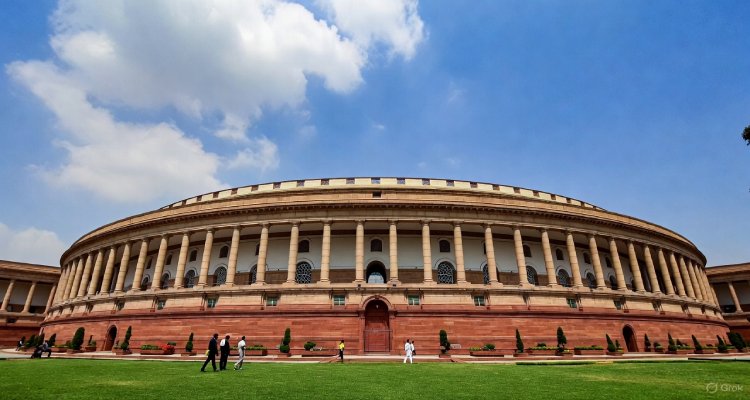U.S. Trade Tariffs Spark Global Market Volatility in 2025
Explore how U.S. trade tariffs and economic uncertainty fuel global market volatility, impacting currencies, stocks, and Bitcoin in March 2025.
U.S. Trade Tariffs Ignite a Firestorm of Global Market Volatility
March 12, 2025 – The financial world woke up today to a familiar yet unnerving hum: the buzz of uncertainty. The U.S. dollar hovered near a five-month low against major currencies, bruised by a cocktail of faltering economic data and President Donald Trump’s erratic trade policies. Meanwhile, markets from Toronto to Tokyo braced for impact as the specter of tariffs loomed large, threatening to upend everything from steel prices to Bitcoin’s rollercoaster ride.
As dawn broke over Wall Street, the mood was anything but sunny. Investors, analysts, and everyday Americans were glued to their screens, awaiting the latest Consumer Price Index (CPI) report—a potential powder keg for an already jittery market. “Trade uncertainty persists, and therefore so does market volatility,” warned Kyle Rodda, a senior analyst at Capital.com, his words echoing the sentiment of a global financial community on edge.
A Dollar Under Siege: Tariffs and Recession Fears Collide
The U.S. dollar index, a barometer of the greenback’s strength against six major peers, sat flat at 103.47 in early Asian trading today. That stillness belied a tumultuous Tuesday, when it plunged 0.46% to 103.21—its weakest since mid-October. The culprit? A steady drip of disappointing economic signals, capped by Tuesday’s report showing small-business confidence sliding for the third consecutive month in February.
President Trump’s trade agenda only fanned the flames. Over the weekend, he hinted at a possible recession during a Fox News interview, refusing to dismiss the economic fallout of his aggressive tariff plans. Just yesterday, he sent shockwaves through North America by pledging to double tariffs on Canadian steel and aluminum to a staggering 50%—only to backtrack hours later. The Canadian dollar, caught in the crossfire, whipsawed between gains and losses, leaving traders dizzy and the loonie steady at C$1.44325 against the greenback by Wednesday morning.
Julien Lafargue, chief market strategist at Barclays Private Bank, painted a grim picture of what’s at stake with today’s CPI release. “We’re staring at a lose-lose scenario,” he said. “A hotter-than-expected number could stoke fears of stagflation—rising prices amid stagnant growth—while a softer reading might solidify recession worries.” For a market craving clarity, Lafargue argued, the real need isn’t inflation data but a lifeline to bolster economic growth.
Canada’s Tightrope: Tariffs and Rate Cuts in the Spotlight
Across the border, Canada’s financial fate hung in the balance. The Bank of Canada was set to announce its latest interest rate decision today, with markets betting heavily on a quarter-point cut to ease the sting of Trump’s tariff threats. Already, the central bank has slashed rates to 3% in recent months, a move analysts see as a desperate bid to cushion an economy teetering on the edge of recession.
A recent analysis from RSM Canada warned that if these tariffs stick, Canada could face a dramatic economic shift in 2025, with volatility and uncertainty battering businesses and consumers alike. The report predicted a potential recession this year unless cooler heads prevail in Washington. Yet, amidst the chaos, the Canadian dollar showed flickers of resilience, rebounding slightly after Tuesday’s wild swings—a sign, perhaps, that traders doubt the tariffs’ staying power.
Europe’s Bright Spot: Euro Rides a Wave of Optimism
While North America grappled with trade turbulence, Europe offered a rare glimmer of hope. The euro lingered near a five-month high at $1.0913, just shy of Tuesday’s peak of $1.0947—the strongest since October 11. Fueling the rally was a breakthrough in the Russia-Ukraine conflict: Ukraine’s acceptance of a U.S.-brokered 30-day ceasefire proposal on Tuesday.
The news sent a ripple of optimism through European markets, already buoyed by Germany’s ambitious fiscal spending plans. However, that enthusiasm hit a snag as the Greens, a key political player, vowed to derail the proposal in favor of their own agenda. Still, the euro’s strength underscored a stark contrast to the dollar’s woes, highlighting how geopolitical wins can counterbalance economic headwinds.
Bitcoin’s Wild Ride: A Crypto Canary in the Coal Mine?
Further afield, the cryptocurrency market mirrored the broader unrest. Bitcoin steadied at $82,821 on Wednesday after clawing back from a four-month low of $76,666.98 the previous day. Its volatility—a hallmark of the digital asset—underscored its role as both a speculative darling and a barometer of risk appetite.
A 2024 study from Financial Innovation noted that cryptocurrencies like Bitcoin often defy traditional market logic, with positive returns paradoxically driving higher volatility during turbulent times. As Trump’s tariff threats stoked inflation fears, some investors eyed Bitcoin as a hedge, while others fled to safer havens like gold, which rallied 0.8% on Tuesday. The crypto’s fate, experts say, may hinge on whether today’s CPI data tips the scales toward inflation or recession.
The Bigger Picture: Volatility as the New Normal
Zooming out, the global financial landscape in March 2025 feels like a high-stakes chess game with no clear winner in sight. Sterling, the British pound, eased to $1.2933 after a robust 0.53% jump on Tuesday, while the dollar edged up to 148.01 yen following a five-month low. Everywhere you look, currencies, stocks, and commodities are dancing to the tune of uncertainty.
“Trade uncertainty persists and therefore so does market volatility,” Rodda reiterated, a mantra that’s become all too familiar this year. The VIX, Wall Street’s so-called “fear gauge,” spiked to 23.5 on Tuesday as global equities faltered—Europe’s DAX, for instance, cratered 3.5% amid pressure on automakers. Meanwhile, the U.S. 10-year Treasury yield climbed 7 basis points to 4.24%, signaling investor unease.
For everyday Americans, the stakes are personal. Higher tariffs could mean pricier gas and groceries, as Canadian energy and agricultural imports face new barriers. A Bank of Canada report from January estimated that a 25% U.S. tariff on all Canadian goods could slash GDP growth and nudge CPI inflation higher—pain that no amount of rate cuts might fully offset.
Navigating the Storm: What’s Next for Investors?
So, where does this leave us? For investors, the playbook is clear yet daunting: diversify, hedge, and stay nimble. Capital preservation strategies, like leaning into high-grade bonds, could shield portfolios from equity sell-offs, while mean-reversion tactics might capitalize on the market’s wild swings.
Experts like Lafargue urge patience. “Visibility on growth is what we need,” he said, a sentiment echoed by UBS Global’s latest CIO House View, which sees long-term potential in AI-driven equities despite near-term tariff risks. The S&P 500, they predict, could still hit 6,600 by year-end if earnings hold firm and the Federal Reserve eases rates further—a big “if” given today’s CPI wildcard.
For the average reader, the takeaway is simpler: brace for turbulence but don’t panic. History shows markets often weather tariff storms—recall 2018, when U.S. steel tariffs barely dented the TSX or S&P 500. The difference now? Central banks are cutting rates, not hiking them, offering a potential buffer.
Riding the Waves of Uncertainty
As the sun sets on March 12, 2025, the global financial markets remain a cauldron of chaos and opportunity. Trump’s trade tariffs have unleashed a tempest, rattling currencies, stocks, and cryptocurrencies alike. The U.S. dollar stumbles, the euro soars, and Bitcoin teeters—each a thread in a tapestry of volatility woven by policy unpredictability and economic unease.
Yet, amidst the storm, there’s a silver lining. Central banks stand ready to act, and savvy investors can find refuge in diversification and resilience. Whether you’re a trader eyeing the next CPI twist or a family budgeting for higher prices, the message is the same: adapt, stay informed, and hold steady. In a world where trade uncertainty persists, the only certainty is change—embrace it, and you just might come out ahead.
Source: (Reuters)
(Disclaimer: This article reflects data and insights available, and is intended for informational purposes only. It does not constitute financial advice. Market conditions can shift rapidly, so readers should consult professionals for personalized guidance.)
Also Read: Trump’s 2025 Tariff Chaos: Economic Impacts and Market Turmoil Unraveled











